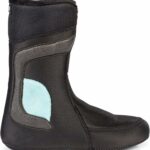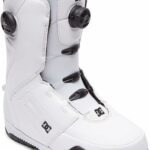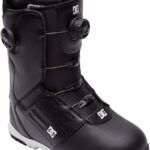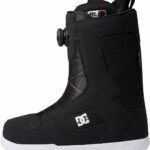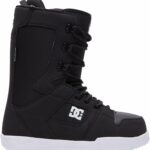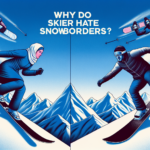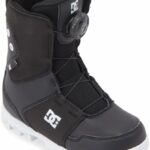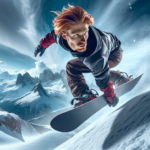Imagine ripping down a snow-covered slope, cold air biting at your face, snowflakes whipping past as you carve a path in the pristine white landscape. A thrilling scene, right? This is the exhilarating reality for snowboarders. But have you ever wondered about the origins of this adrenaline-fueled sport? Through the article “When Did Snowboarding Begin?” your curiosity will surely be stoked as you’re taken on a journey through time to uncover the roots of snowboarding.
Origins of Snowboarding
Snowboarding has roots that extend as far back as humans have been sliding down snow-covered hills, but the sport as we know it today was actually conceived relatively recently.
Early Forms of Snowboarding
Can you imagine a time when snowboarding equipment was as simple as strapping a couple of skis together and hitting the slopes? Well, that’s how it started. The earliest form of snowboarding was born out of a desire to surf on snow instead of water. People in snowy locales would strap together skis or other boards to mimic the feeling of surfing down mountains.
Cultural Influences on Snowboarding
Snowboarding drew heavy influences from skateboarding, surfing and skiing culture. The carefree and rebellious nature of these communities contributed significantly to snowboarding’s evolution. Its early adopters were largely young people who loved pushing boundaries and challenging traditional norms.
Key Figures in the Creation of Snowboarding
Tom Sims, Jake Burton Carpenter, and Dimitrije Milovich were instrumental in popularizing snowboarding. These pioneers developed early snowboard prototypes and worked tirelessly to legitimize snowboarding as a recognized sport.
Historical Timeline of Snowboarding
Every sport has its crucial turning points and snowboarding is no different.
First Prototypes of Snowboards
The first prototypes of snowboards were crude and basic. In the late 1960s, Sherman Poppen, an engineer and surfer, designed a simple toy for his kids by strapping two skis together and attaching a rope at the front for stability. This contraption, called a “Snurfer,” became popular in his neighborhood and eventually paved the way for the development of modern snowboards.
Snowboarding in the 1960s and 1970s
During the 60s and 70s, pioneers like Dimitrije Milovich, Tom Sims, and Jake Burton took Poppen’s idea and refined it. They started designing boards specifically for riding down snow-covered slopes. It was a period of experimentation and innovation but also a struggle to gain acceptance.
Snowboarding in the 1980s and 1990s
The 80s and 90s were decades of great progress for snowboarding. It moved from relative obscurity and started being recognized as a legitimate sport. In 1982, the first national snowboarding championship was held in the USA, paving the way for wider acceptance. Snowboarding’s growing popularity led to it being included in the Winter X Games in 1997.
Snowboarding in the 21st Century
Snowboarding in the 21st century has grown far beyond early enthusiasts’ wildest dreams. It’s not only a recognized sport but is a key feature in winter sporting events around the world, including the Olympics.
Development of Snowboarding Equipment
Snowboarding equipment has come a long way since the basic setup of the earliest snowboards.
Evolution of Snowboard Design
From basic planks to sophisticated and specialized designs, snowboard design has evolved to meet the needs of various riding styles. Whether it’s freestyle, freeride, or alpine, there’s a board design specific to every niche.
Technological Advancements in Snowboards
As the popularity of snowboarding increased, companies started investing in technological advancements to improve performance. Advances in materials science have rendered boards lighter, stronger, and more responsive to intricate maneuvers.
Safety Equipment Advancements
Early snowboarding had its share of accidents, but safety equipment advancements have made the sport safer. Protective gear like helmets, wrist guards, and padding has become more sophisticated and effective at preventing injuries.
Climate and Geographical Influences on Equipment Evolution
The development of snowboarding equipment has also been shaped by different climates and geographical regions. Different terrains demand different board designs and protective gear.
The First Snowboarding Competitions
The competitive side of snowboarding has played a major role in the growth of the sport.
Early Local and Regional Snowboarding Events
The earliest snowboarding competitions were small local or regional events. These grassroot contests provided the main platform for snowboarders to showcase their skills and laid the groundwork for wider recognition of snowboarding.
Establishment of Professional Snowboarding Competitions
In the late 1980s and early 1990s, professional snowboarding competitions emerged. High-profile events like the US Open provided a stage for the best snowboarders to compete and helped popularize the sport globally.
Evolution of Competitive Snowboarding Formats
As snowboarding matured, competitive formats evolved to highlight different skills and styles. Today, competitions range from slopestyle to halfpipe to boardercross, each showcasing unique aspects of snowboarding prowess.
Snowboarding in the Olympics
Snowboarding’s climb to Olympic status was a significant milestone in the sport’s history.
Campaign for Snowboarding Inclusion in Olympics
The campaign for snowboarding’s inclusion in the Olympics started earnestly in the 1990s. Despite pushback from traditional skiing communities, proponents argued for snowboarding’s legitimacy as an athletic discipline.
Snowboarding’s Olympic Debut in 1998
The hard work and dedication of snowboarding advocates paid off when snowboarding made its Olympic debut at the Winter Games in Nagano, Japan, in 1998.
Subsequent Olympic Participation and Performance
Since 1998, snowboarding has been a regular feature of the Winter Olympics. Many talented snowboarders have won prestigious Olympic medals, solidifying the sport’s legitimacy on the global stage.
Demographics of Snowboarding
Snowboarding has broken the shackles of its early demographics and evolved into a sport enjoyed by all ages.
Snowboarding’s Initial Target Audience
In its early stages, snowboarding appealed primarily to young males, influenced by its roots in skateboarding and surfing culture. The sport was often characterized by a counter-culture vibe and rebellious spirit.
Expansion of Snowboarding Across Different Demographics
Over the years, snowboarding has expanded to include different age groups and genders. As its reputation as a fun and exciting sport grew, so did its fan base. Today, men and women, kids and adults, all enjoy snowboarding.
Current Demographic Trends in Snowboarding
Presently, snowboarding enjoys a diverse demographic with people of all ages and backgrounds taking to the slopes. Young people continue to dominate the sport, but the number of adults, especially women, venturing into snowboarding is on the rise.
Social and Cultural Impact of Snowboarding
Snowboarding is not just a sport; it’s a lifestyle that has influenced our culture in surprising ways.
Impact on Popular Culture
Snowboarding has had a significant impact on popular culture. It has inspired countless films, video games, and even language slang. Its energy and rebelliveness have come to embody a distinct youth culture.
Influence on Fashion and Music
Snowboarding has always had a strong tie with fashion and music. Baggy snow pants, beanies, and specific brands have become snowboarding style icons. Similarly, genres like punk rock and hip hop have been associated with the sport.
Social Controversies and Debates About Snowboarding
Snowboarding hasn’t been without debate and controversy. Initially dismissed by traditionalists as ‘a fad,’ and occasionally seen as a disruptor to peaceful ski slopes, it has faced its share of social resistance. However, it continues to redefine itself and establish its place in winter sports history.
Snowboarding Industry
The rise of snowboarding has spawned a thriving global industry.
Key Players in the Snowboarding Industry
There are several key players in the snowboarding industry. Companies like Burton, K2, and Salomon have established themselves as pioneers in snowboarding equipment. Major sponsorships from companies like Red Bull and Monster Energy have also boosted the sport’s growth.
Economic Impact of Snowboarding
With hundreds of millions of dollars in annual revenue, the snowboarding industry contributes significantly to the economy. Jobs in manufacturing, retail, marketing, instruction, and resort operation all rely on the snowboarding industry.
Trends and Future Prospects in Snowboarding Industry
The industry continues to grow, with a trend towards sustainable practices and technological innovation. The future looks promising, with younger generations taking keen interest in the sport.
Key Figures in Snowboarding History
Snowboarding history is full of individuals who have left indelible marks on the sport.
First Generation of Snowboarders
The first generation of snowboarders, including pioneers like Jake Burton and Tom Sims, set the groundwork for what the sport would become. They were the ones pushing the limits and innovating early equipment designs.
Influential Snowboarding Athletes
From pioneers, we move to celebrated athletes who dominated the sport. Names like Shaun White, Hannah Teter, and Travis Rice have been instrumental in shaping modern snowboarding with their athleticism, creativity, and style.
Contributors to Snowboarding Innovation and Culture
Snowboarding culture wouldn’t be what it is today without the visionaries who’ve contributed behind the scenes. Engineers, designers, photographers, filmmakers – each one has helped shape the culture, ethos, and aesthetic of snowboarding.
Snowboarding Techniques and Styles
As with any dynamic sport, the techniques and styles employed in snowboarding have evolved over time.
Early Snowboarding Techniques
Early snowboarding techniques were rudimentary, focusing mainly on keeping balance and going downhill as fast as possible. As creativity poured into the sport, riders started experimenting with turns, jumps, and tricks.
Development of Various Snowboarding Styles
Today, there are many different styles in snowboarding. Whether it’s the technical precision of alpine snowboarding, the creativity in freestyle, or the adrenaline rush in freeride, each approach to snowboarding has its own unique techniques.
Influence of Other Sports on Snowboarding Techniques and Styles
The influence of other sports like skateboarding, surfing, and skiing has shaped snowboarding styles and techniques. For example, the ‘ollie’, a staple in skateboarding, is an integral part of many snowboarding tricks.
Snowboarding, despite its relatively recent arrival on the scene, has snowballed into an international phenomenon. From its early years of basic equipment and social resistance to its current status as a beloved winter sport, snowboarding has truly found its footing in the heart of winter sports enthusiasts worldwide.
- What Snowboard Bindings Should I Get? - January 23, 2024
- What Size Screws For Snowboard Bindings? - January 23, 2024
- How To Snowmobile On Water? - January 23, 2024

